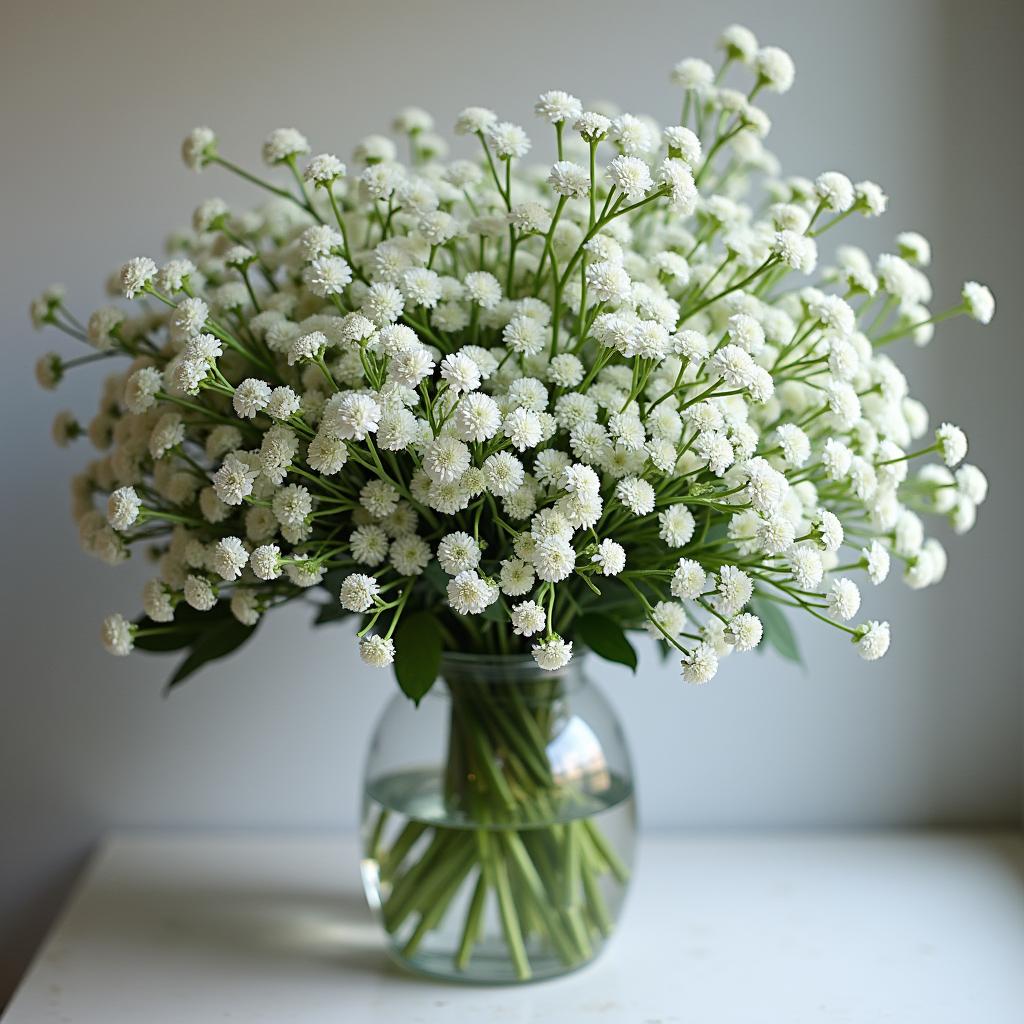
Gypsophila, commonly referred to as ‘baby’s breath,’ is a flowering plant that belongs to the Caryophyllaceae family. This genus consists of approximately 150 species, most of which are native to Europe and Asia. The most widely known variety is Gypsophila paniculata, which is characterized by its cascading clusters of small, delicate white flowers. These blooms, which are often utilized in floral arrangements, give off a soft, airy feel, making them an essential addition for florists and DIY floral enthusiasts alike.
Gypsophila typically grows in sunny and well-drained locations, thriving in a range of soil types. It is a hardy plant, often cultivated in gardens for its understated beauty, as well as for professional floral use. Its growth habit allows it to flourish well in mixed bouquets, providing a gentle contrast to more vibrant flowers. As a perennial, it can return season after season, making it a popular choice among those who value sustainability in their floral selections.
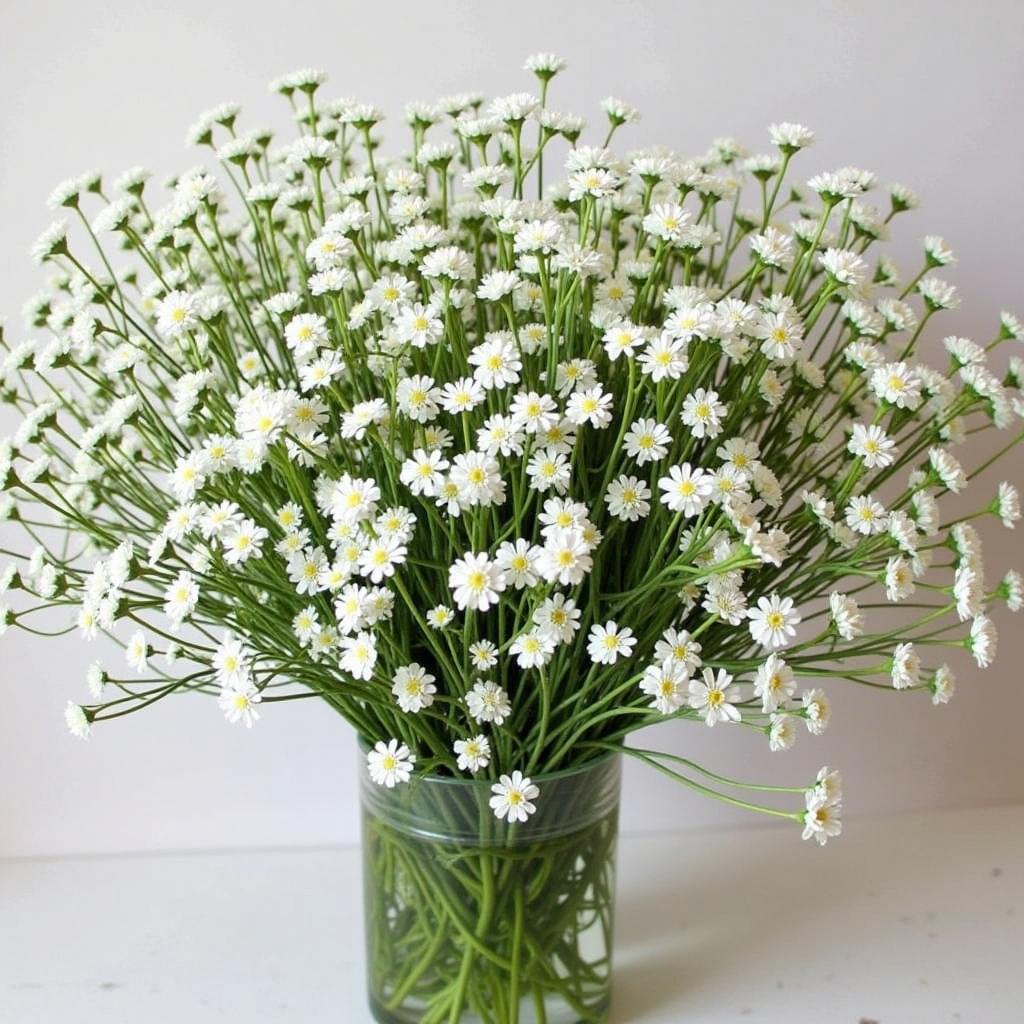
The historical use of gypsophila in flower arrangements dates back to the mid-20th century, when its enchanting charm began to gain prominence among florists. Its ability to complement a variety of other floral species has led to its incorporation in a multitude of arrangements, from weddings to celebratory events. The soft texture and subtle shading of gypsophila make it an effective filler flower, enhancing the overall aesthetic without overwhelming the primary blooms. In contemporary floral design, its versatility continues to be celebrated, securing gypsophila’s position as a beloved staple in the world of floristry.
Styling Tips for Incorporating Gypsophila
Gypsophila, commonly known as baby’s breath, is a delicate flower that adds a charming touch to various floral arrangements. Its fine, wispy branches and tiny blossoms provide a textural contrast that can enhance the overall look of bouquets, centerpieces, and boutonnieres. Understanding how to style gypsophila effectively can make a significant difference in achieving a harmonious and aesthetically pleasing floral design.
When pairing gypsophila with other flowers, consider using blooms that complement its subtle beauty. Larger, more structured flowers such as roses, peonies, or hydrangeas work exceptionally well; they create a stunning juxtaposition between the boldness of the main flowers and the soft, airy quality of gypsophila. For a more rustic feel, consider combining baby’s breath with various wildflowers, which can create a whimsical and organic look. It is also effective to group gypsophila in clusters alongside bolder hues to provide a pop while maintaining an overall soft palette.
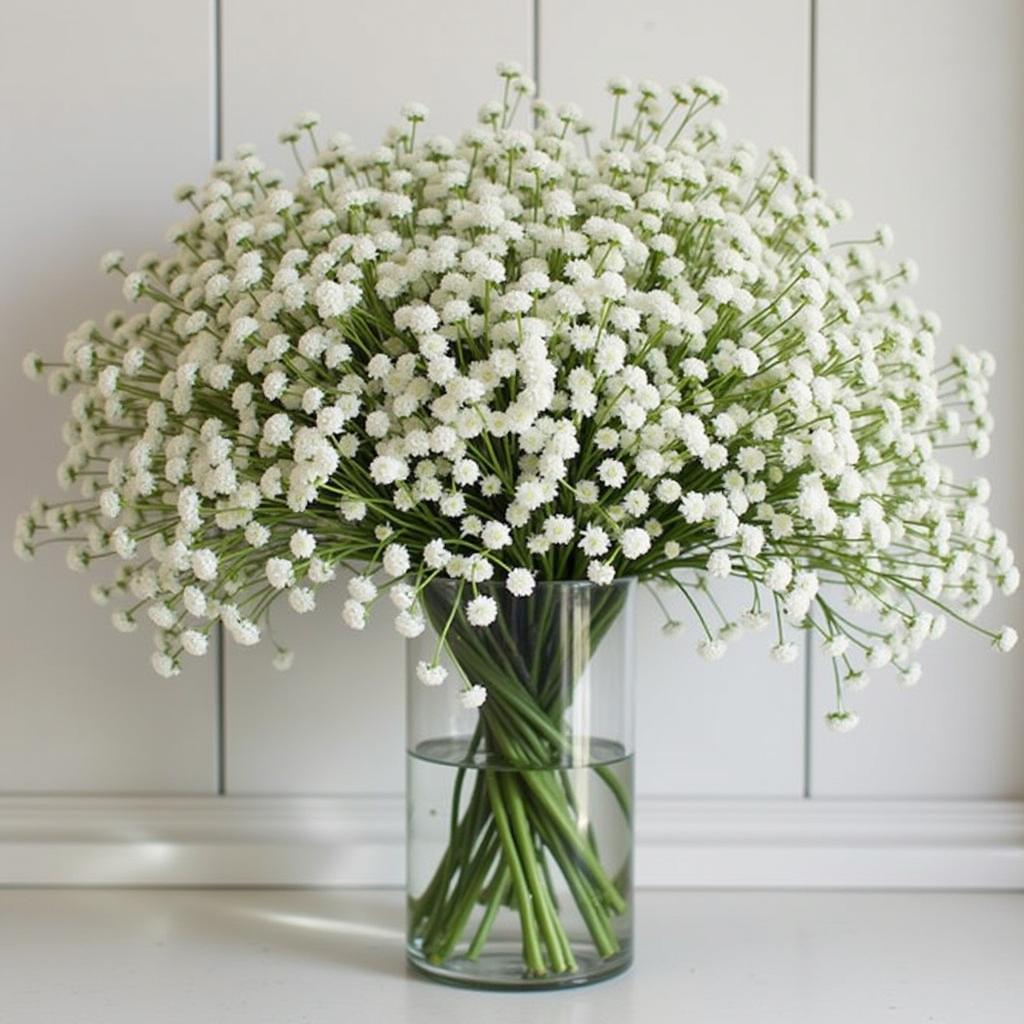
Color palettes are critical when arranging flowers. Soft pastels, such as blush pink, lavender, or light blue, work wonderfully with gypsophila, evoking a romantic and serene vibe. For a more dramatic impact, pair gypsophila with deep jewel tones—like emerald or burgundy—to create a striking contrast. This approach allows gypsophila to serve as a delicate highlight that softens the arrangement’s overall mood.
In terms of arrangement styles, gypsophila shines in a variety of formats. For casual weddings or outdoor events, consider a loose bouquet filled with an assortment of blooms and complemented by strands of baby’s breath. In centerpieces, it is often effective to mix gypsophila with greenery, creating a lush, inviting atmosphere. Boutonnieres featuring gypsophila paired with a single standout flower can offer elegance and simplicity, perfect for any formal occasion.
Care and Maintenance of Gypsophila in Arrangements
Proper care and maintenance of gypsophila, popularly known as baby’s breath, is essential to prolong its delicate beauty in flower arrangements. Once cut and placed in an arrangement, gypsophila does best when certain conditions are met. First and foremost, ensuring adequate water absorption is crucial. Always use clean, room-temperature water to fill the vase or container. It is advisable to strip off any leaves that might come into contact with water, as this helps to reduce the growth of bacteria, which can hinder water absorption.
The ideal temperature for gypsophila should be cool, ideally between 60°F and 70°F. Placing arrangements in direct sunlight or near heat sources can accelerate wilting, severely diminishing the flowers’ lifespan. A cool, shaded environment is recommended to maintain both the structural integrity and the visual appeal of the flowers. Regularly check water levels and top off as necessary, ensuring the stems remain submerged to promote ongoing hydration.
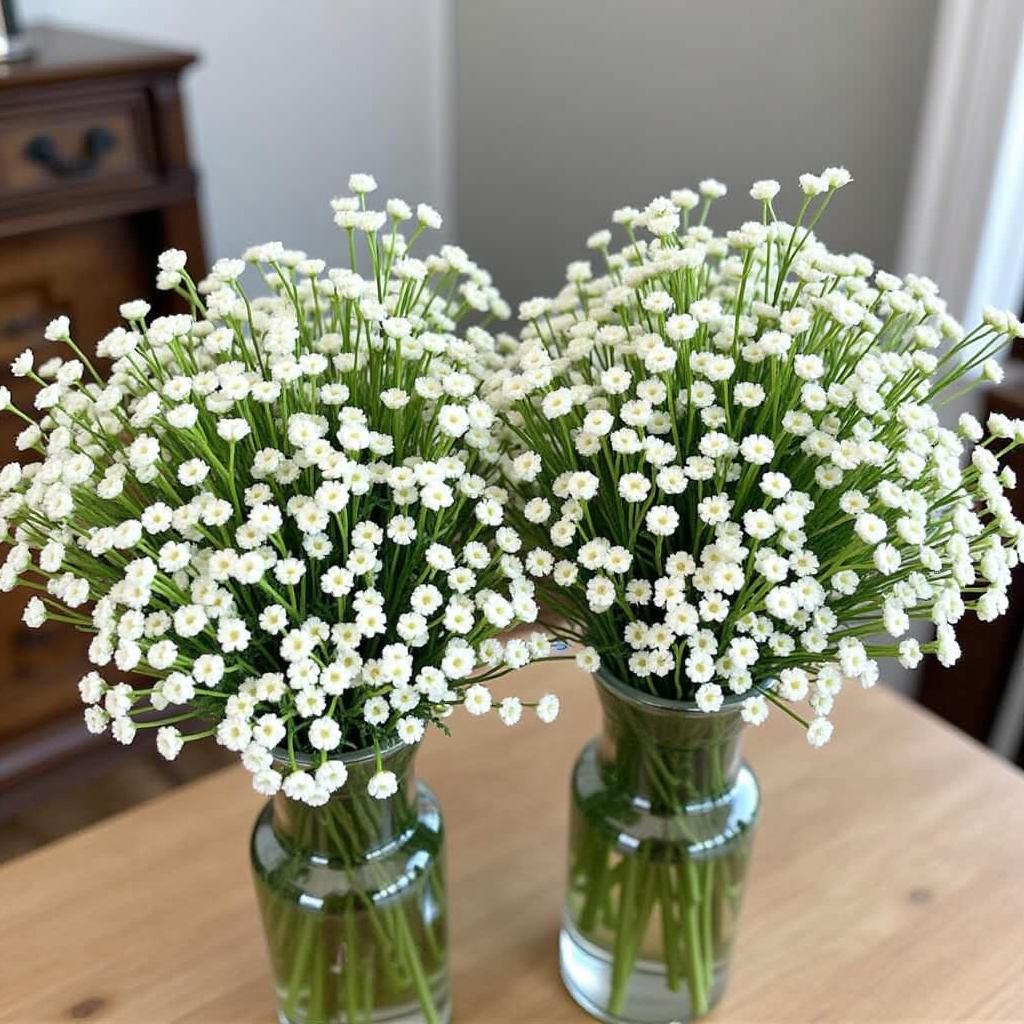
Refreshing an arrangement can also be an effective method for maintaining its freshness. Every few days, it can be beneficial to re-cut the stems at a diagonal angle. This action helps to open up the stem channels, allowing for better water intake. Additionally, change the water entirely every few days to provide a clean environment for the flowers. If signs of wilting or browning appear, consider adding a floral preservative to the water, which can provide essential nutrients and prolong the arrangement’s life.
By following these care and maintenance practices, you can enjoy the ethereal charm of gypsophila in your flower arrangements much longer. Keeping these delicate flowers healthy will not only enhance their beauty but also add an element of longevity to your floral displays.
Creative Ways to Use Gypsophila Beyond Traditional Arrangements
Gypsophila, often referred to as baby’s breath, has long been celebrated for its delicate appearance and ability to complement a variety of floral designs. However, its versatility extends well beyond traditional flower arrangements. In contemporary floral artistry, gypsophila is being embraced in innovative ways that cater to diverse aesthetic preferences. One exceptional application is in wedding decorations, where it can transform a venue into a whimsical dreamscape. For instance, hanging gypsophila installations or cascading floral clouds can create an ethereal atmosphere, captivating guests and enhancing the overall ambiance.
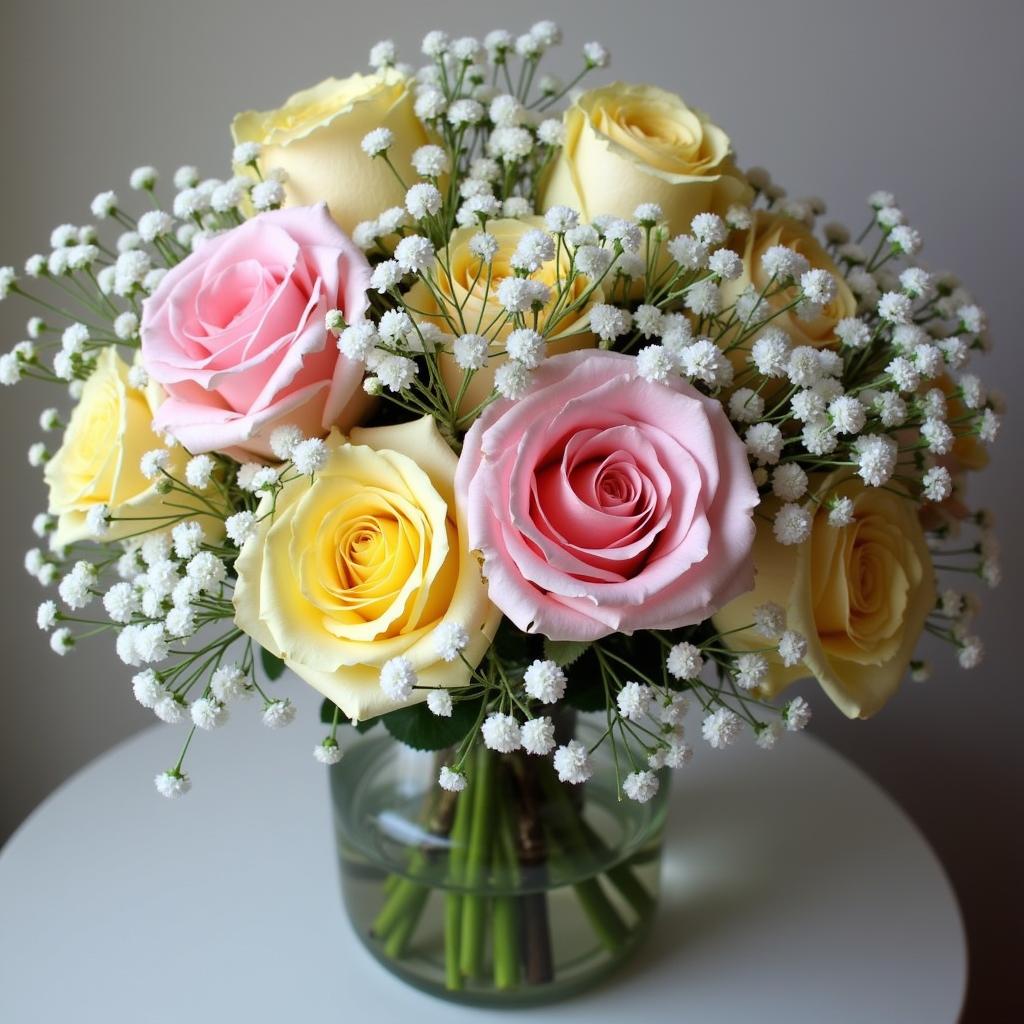
In addition to events, gypsophila can lend itself beautifully to home decor projects. Utilizing this flower in minimalist vases, or combined with unconventional materials such as wood, can create striking focal points in a living room or office space. Gypsophila’s adaptability allows it to suit various interior styles, from rustic to modern, making it a perfect choice for those looking to refresh their surroundings with a touch of softness and elegance.
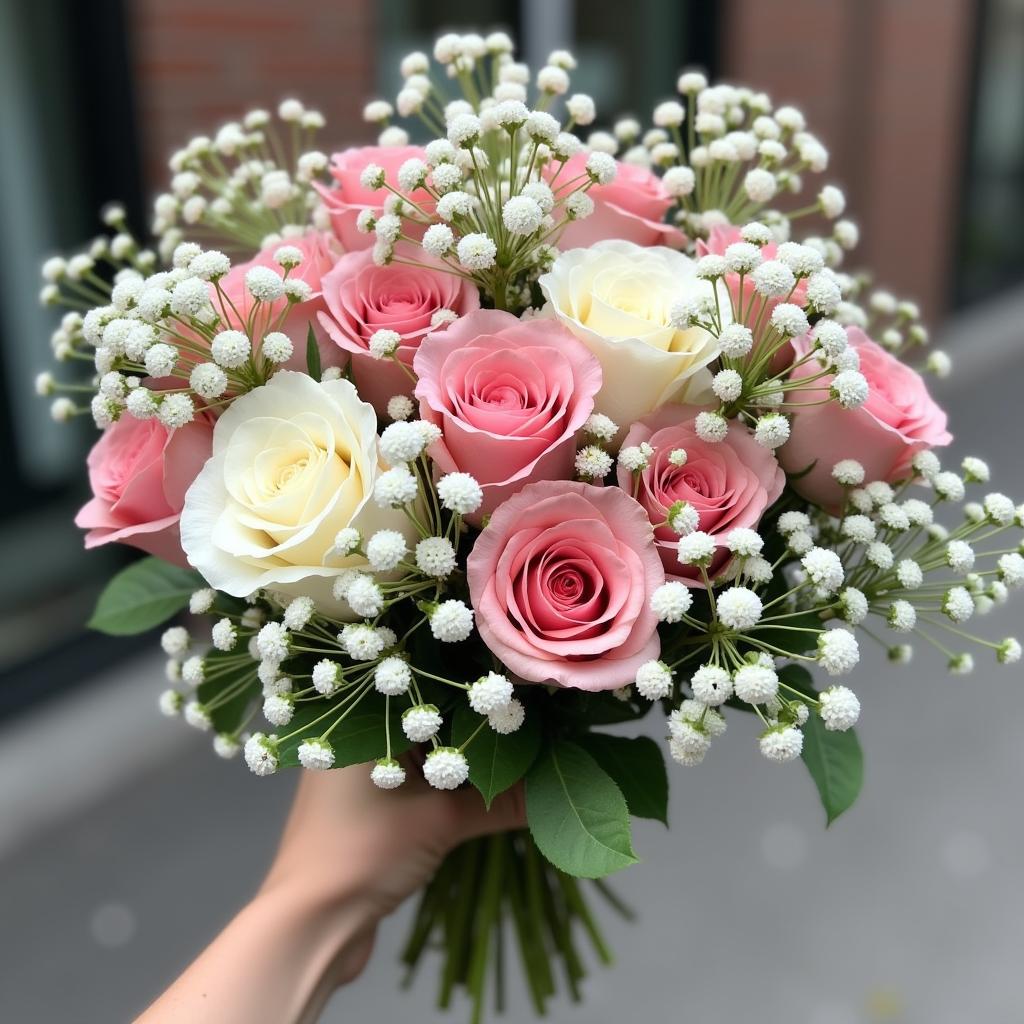
Another creative way to incorporate gypsophila is through gift wrapping. Instead of relying solely on conventional materials, incorporating sprigs of gypsophila into the ribbon or as a decorative element can add a thoughtful, personal touch that elevates the presentation. This simple addition not only enhances the beauty of the gift but also showcases the giver’s attention to detail.
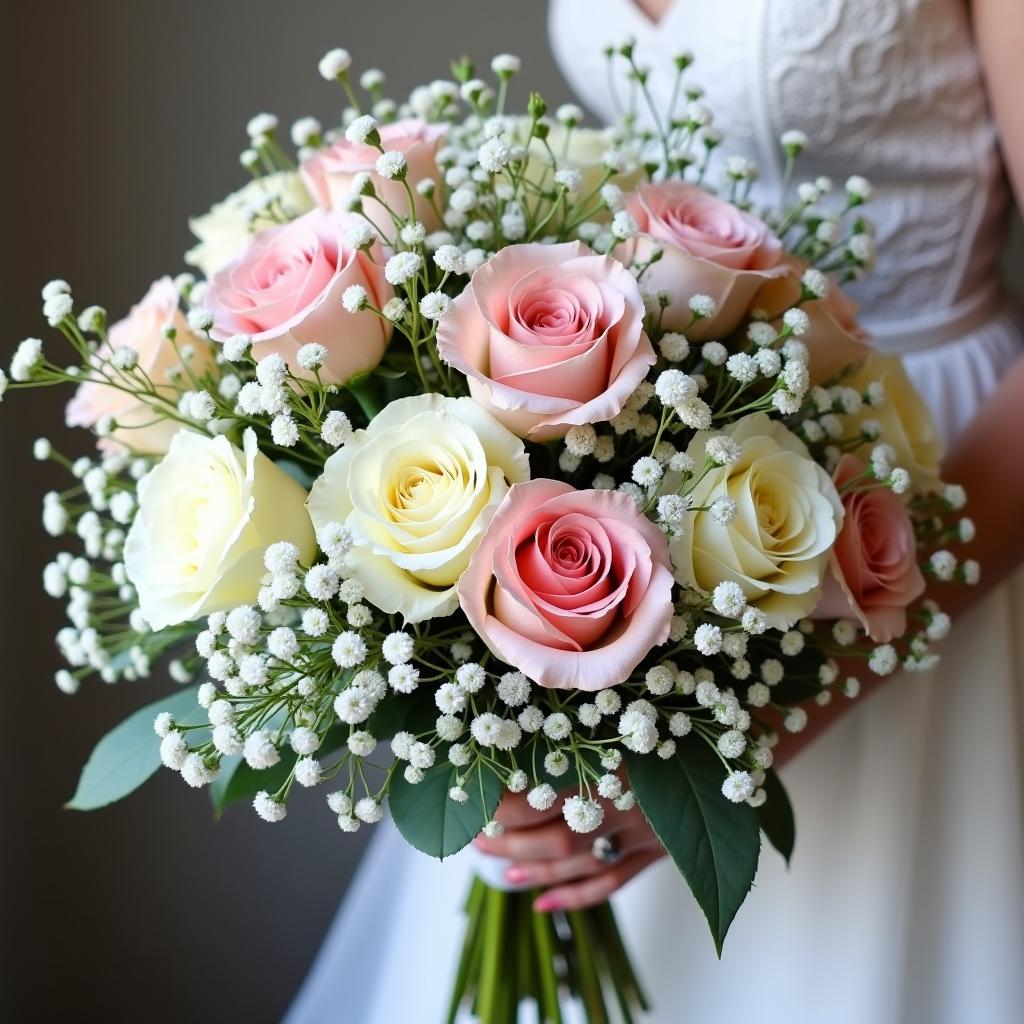
As floral trends continue to evolve, gypsophila remains a favorite among designers experimenting with unexpected textures and color palettes. Encouraging readers to think outside the box, it is clear that the charm of gypsophila can be harnessed in myriad ways, inviting new opportunities to explore its potential in both professional and personal floral projects.
